“Of Breath and Bone” is a two-person show featuring the works of Cindy Davis and Ronnie Wilson. Wilson’s work shifts between landscape paintings and wall-mounted assemblages. Davis’s wall-hung work shifts within the spaces occupied by drawing, painting, sewing, process art, collage, assemblage, conceptualism, repurposed maps and crotchet.
Wilson’s paintings can be very satisfying because of her light touch. A suite of four square landscapes holds court in the center of the gallery. They are easy for all the right reasons: well-designed, well-painted, smartly colored and handled with a lively, bold and well-controlled brush. Each image presents a different palette and each is successful. The sky-oriented landscapes also don’t get mired in detail; they present themselves straightforwardly as easy-to-like paintings. Their varied modes of color, however, invite closer inspection, at which point Wilson’s ability to vary (and therefore control and select) style and technique becomes apparent.
While Wilson’s assemblages move closer than I would like to decorative in their evenness and sense of finish, they are successful. A particularly interesting one that plays well against the systems logic of Davis’ work is “Euphonious.” It features a wide wooden “H” with 20 positive/negative little canoe shapes vertically placed above and below the crossbar. Like the best of Wilson’s work, both the aesthetic intent (“euphonious” means pleasant-sounding) and systems-sensibility (in Wilson’s hands, this falls under consistent style and finish) are evident.
“Euphonius” uses its “United Auto Parts” label printed on the crossbar piece (an old wooden ruler) to announce a dulcet antique-appearing intention. It’s charming – and that is a term that can lean either way for different folks. After all, some people have a hard time believing work that is attractive can also be smart.
Davis’ assemblages have an extremely different charm. Her “Shingle Map (Sicilia)” is quite clearly both playful and the product of massive effort on the part of the artist, which tends to help viewers trust that a great deal of thought went into it as well. It appears to be a 1958 linen map – linen was the top-shelf material for maps and architectural drawings – because Davis uses a map’s margined borders to frame the work. The borders’ marginalia indicate the year and, with a wink to her own semi-compromised authorship, information such as “Compiled and Drawn by / R. BAXTER BLAII.” This attribution starts to read as “Blatt” but on closer inspection is revealed to have been something like “Blair” but only for Davis’ savvy interventions.
The map shows Italy, but the country has been fattened to accommodate large sections of various forms of braided crochet of yellow thread for land, verdigris for rivers and water, and so on. The Mediterranean, however, has become a sea of hundreds of hand-sewn clothing tags in an overlapping grid indicating an ocean of sizes “4P,” “14P” and “14.” What appears to be initially consistent with the ubiquitous “4” tags is a brilliant touch: We see it all as a single thing (sea) but with logical (i.e., not arbitrary) variations within the system.
Davis does a great deal both to navigate myriad sets of systems logic and to reveal how these various systems are knit together. A few dozen longer, white threads hang from among the tags – revealing from the front the vast amount of work behind them. A section of the top margin of “Sicilia” is in fact from a bottom margin, so next to another maker’s name (the which-guy-is-it question humorously reveals Davis’ game) is an upside-down label. This reversal gets us to check the map margin’s grid numbers and we see they read “8, 15 (upside down), 10” which allows us to read further into Davis’ interventions.
This kind of witty play goes on and on in “Sicilia” and its companion “Grid drawing (another bloom)” which is even more complex, subtle and rewarding. It is a similar map but of varied and reoriented states ranging from Bavaria and Eastern Rumelia to Austria and the Baltic Sea. The center has been scored away and replaced with a blown-up print of a spreadsheet-like watercolor grid of mostly red, orange and yellow check-like marks. Over the areas of colored strokes is a series of about 50 tiny red, orange and yellow bags made of plastic grocery mesh (think prepackaged bags of apples, oranges and lemons) that have been sewn together each, apparently, by three threads from which the bags hang on push pins (so fitting for a map that they become easy to overlook).
These two works are among the strongest examples I have ever seen of the concept-driven, well-crafted, process-heavy work that has come to lead the most ambitious contemporary art being produced in the Northeast. Any of Davis’ eight other works could dominate my critical attention, but these two take a new step beyond her already impressive work. Particularly notable is a suite of pieces that create a dialogue within and about Davis’ own loop-shape works that themselves are about positive/negative space, text/margin, layers/surface (Davis’ experience as a printmaker is a key to understanding her take on depth and layers) and, most brilliantly, the idea of text as something “woven together” (Latin: “textum”) which puts patterns, writing, parchment and textiles into a richly complex conversation that is surprisingly easy to follow.
The looping leather strand(s?) of the giant “line, ruminating,” for example, even go so far as to become an actual textile made out of what looks like the loops of continuous cursive text. The “ruminating” of the title (think OCD) rather ironically announces what Davis puts into her work, underscoring her incredible efforts in a wittily self-deprecating, rather than self-congratulating, manner.
While Davis probably works as hard as any artist in the state, her labor-intensive processes make it impossible for her to produce a great deal of work. So it’s worth the effort to see her new pieces. And while 3Fish is a relatively small space, it makes for a lot to see.
Freelance writer Daniel Kany is an art historian who lives in Cumberland. He can be contacted at:
dankany@gmail.com
Send questions/comments to the editors.

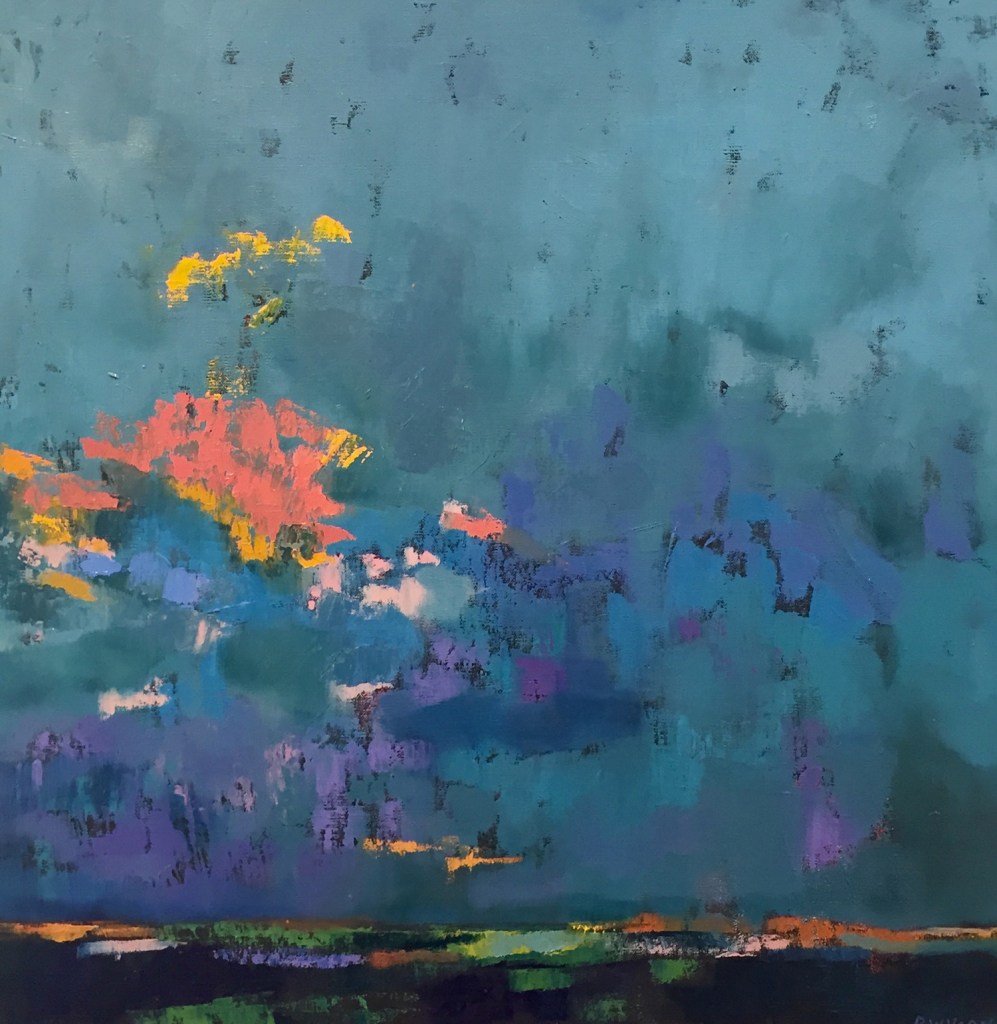
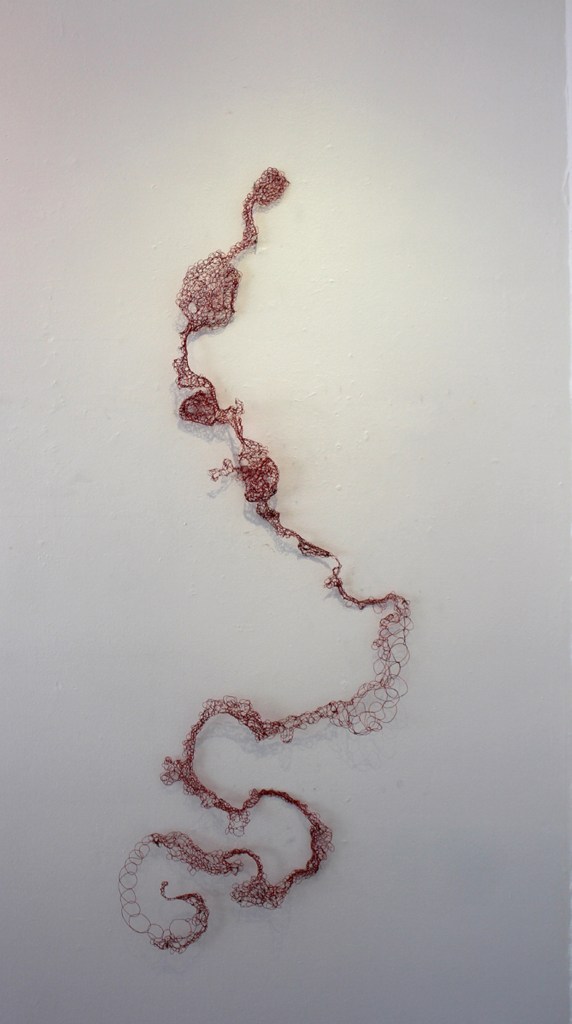
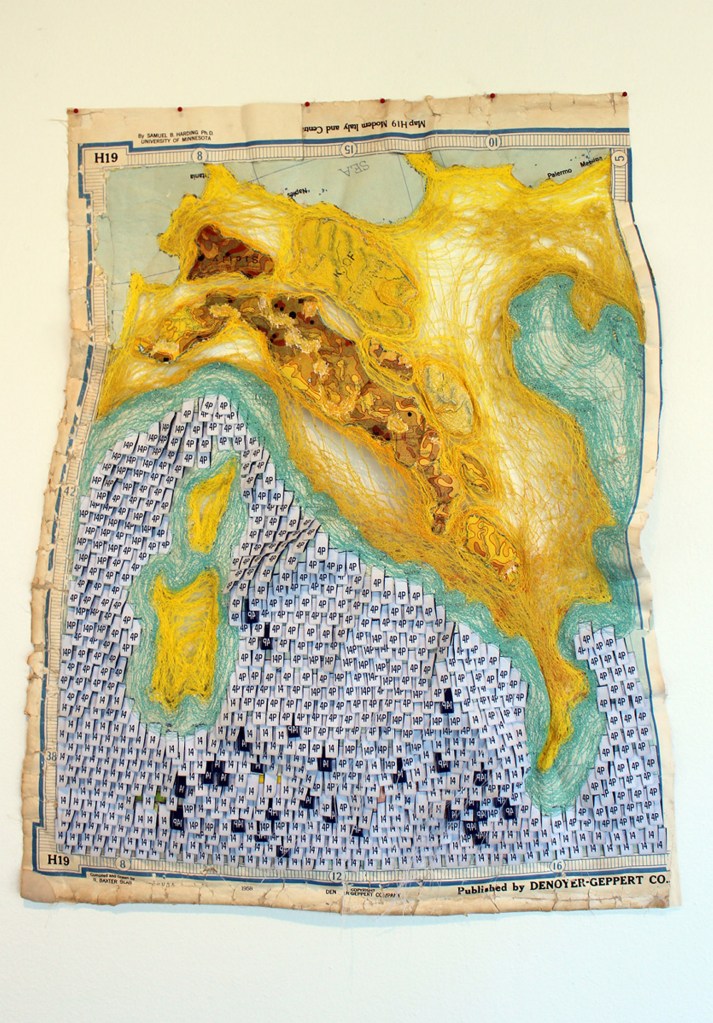
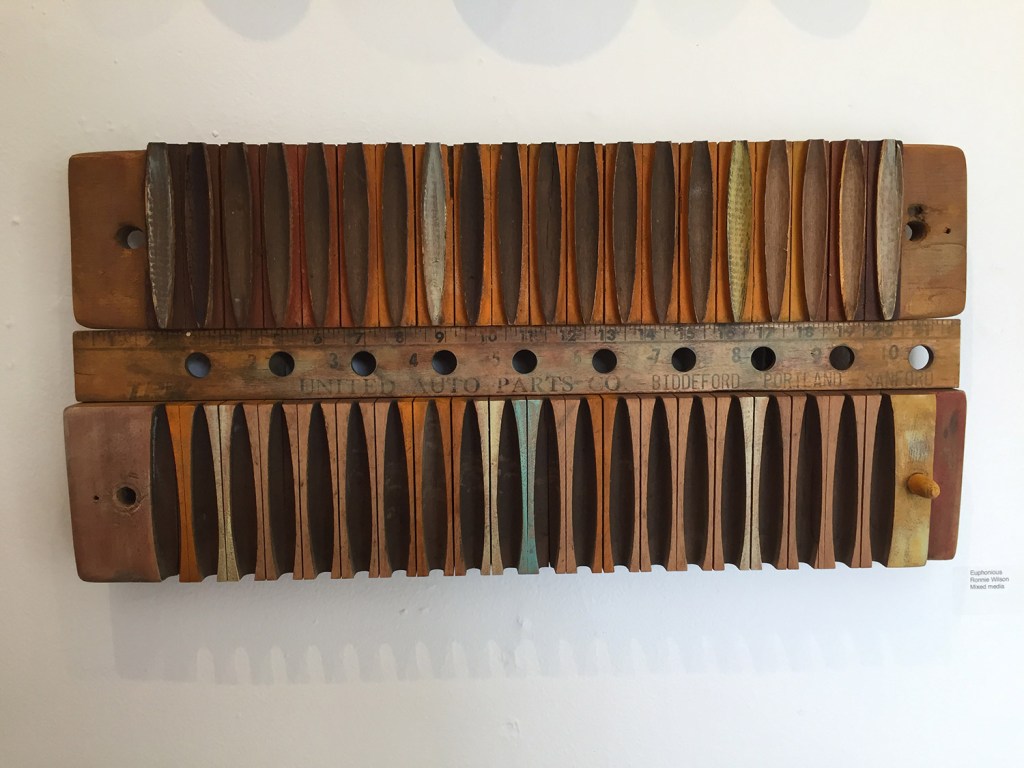
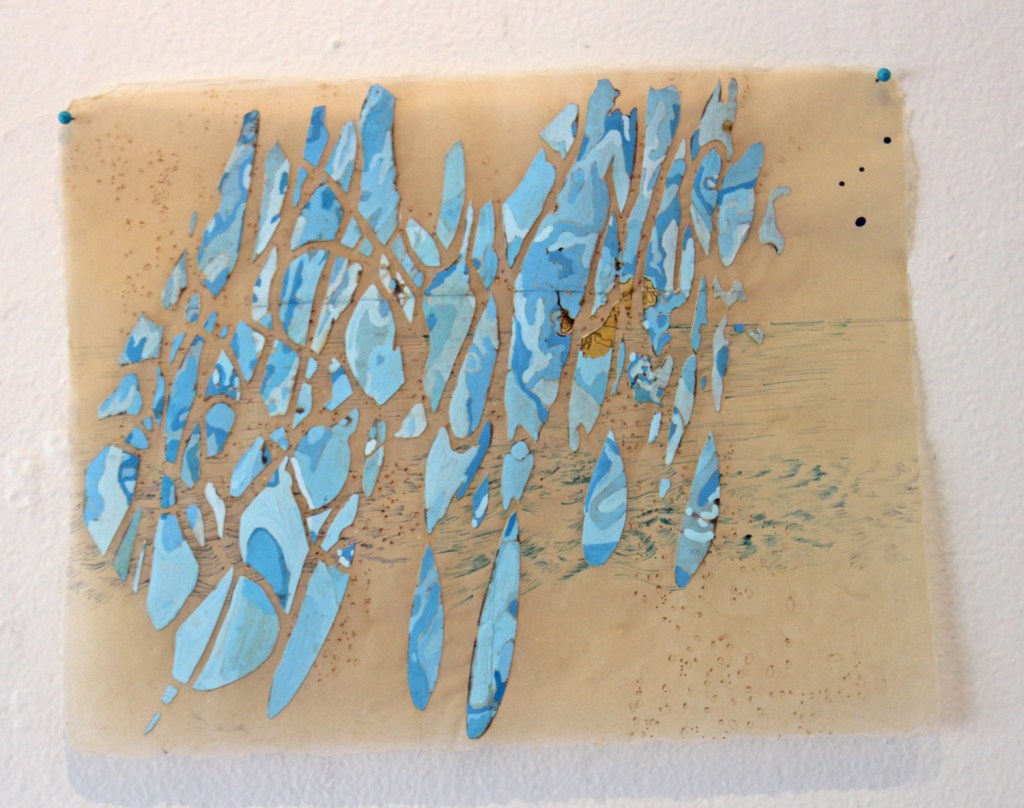
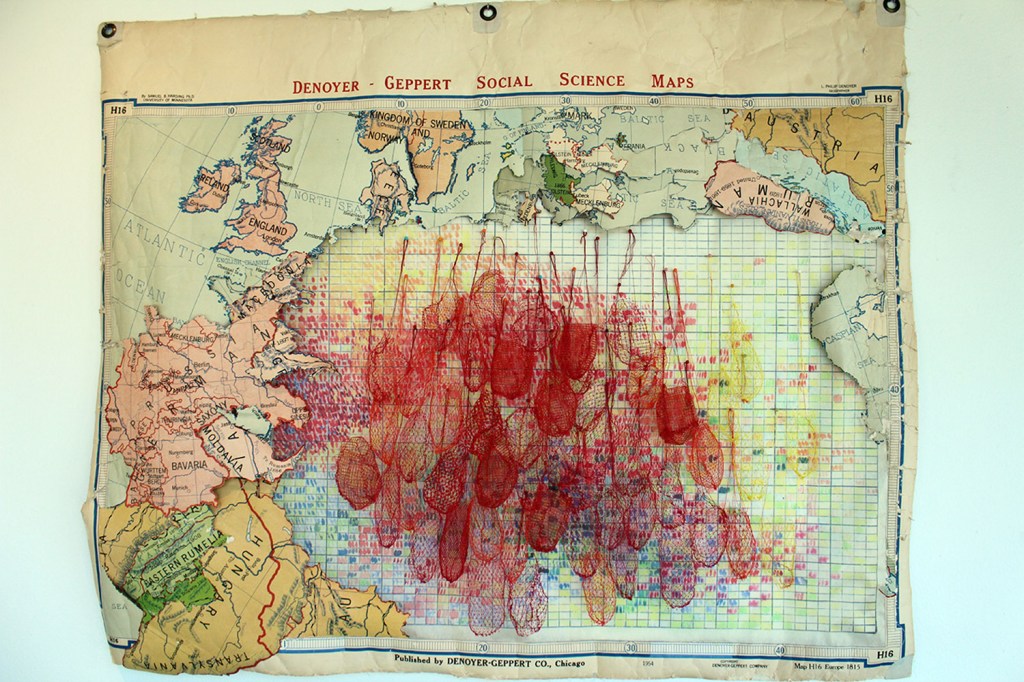

Success. Please wait for the page to reload. If the page does not reload within 5 seconds, please refresh the page.
Enter your email and password to access comments.
Hi, to comment on stories you must . This profile is in addition to your subscription and website login.
Already have a commenting profile? .
Invalid username/password.
Please check your email to confirm and complete your registration.
Only subscribers are eligible to post comments. Please subscribe or login first for digital access. Here’s why.
Use the form below to reset your password. When you've submitted your account email, we will send an email with a reset code.